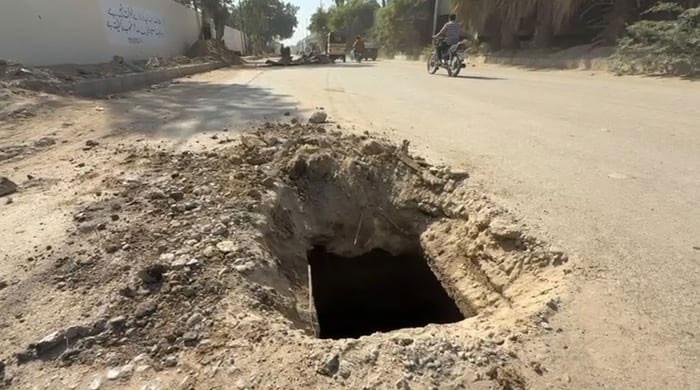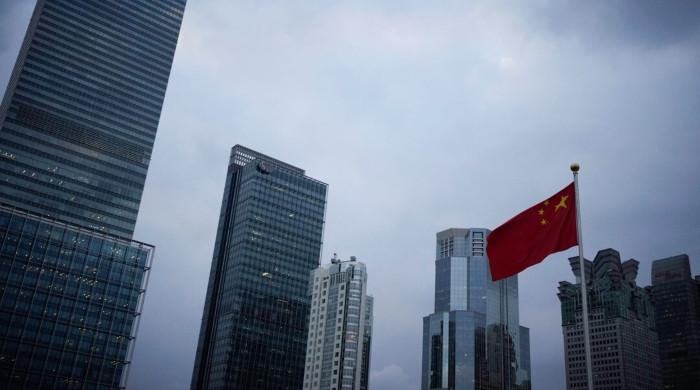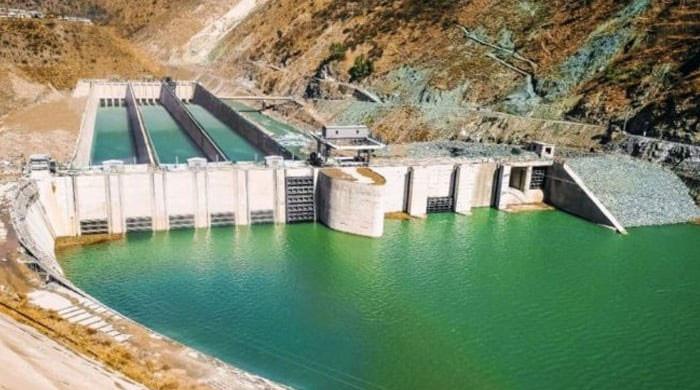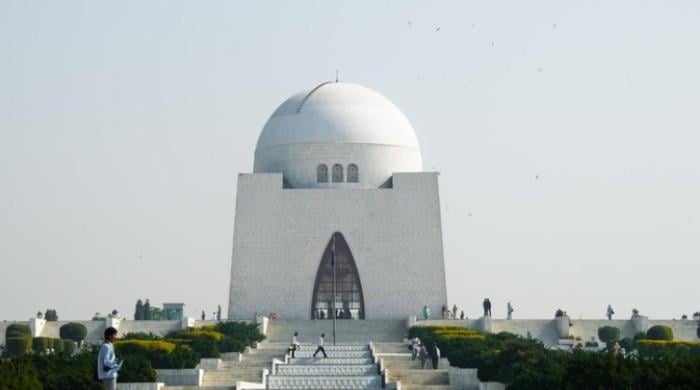Turning this new tide of terror to take more than NAP
No success can be achieved in this new war on terror without all-out public support
November 18, 2023
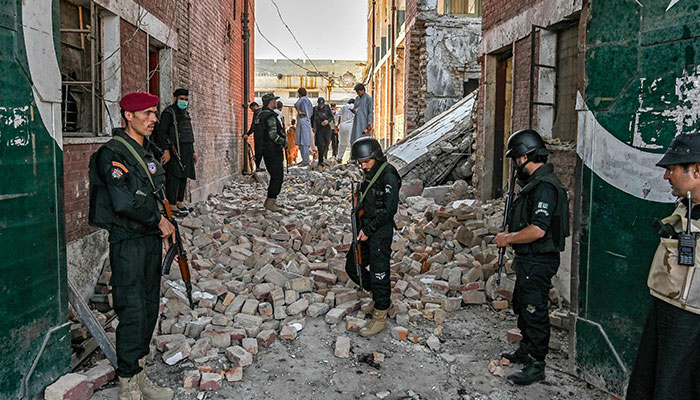
Finding itself virtually at square one, Pakistan is once again locked in a frenzied campaign to tear down the reemerging terror networks operated by homegrown as well as foreign actors, who somehow managed to resurrect this menace — previously decimated by armed forces backed by its people but not without losing or permanently affecting 100,000 lives.
This menace had stepped into the region by the turn of the century, gaining impetus within a decade. Law enforcement agencies (LEA) kept beating it back like an ordinary law and order problem, while religio-political factions of the society remained indifferent. In fact, they were confused about whether the militants, who were all Muslims, deserved to be called and treated as terrorists.
This state of doldrums continued till the militants raided Army Public School Peshawar on December 16, 2014, and mercilessly martyred 149 innocent children and staff. Army’s Special Services Group reacted immediately and killed all seven assailants, rescuing 850 lives.
At the national level, the All Parties Conference (APC) was held which decided to aggressively move the National Counter Terrorism Authority (NACTA), prepare the National Action Plan (NAP) and implement it with full national backing. Accordingly, a consummate effort by all elements of the state and society was launched with the aim of eliminating terrorists, controlling their resources and snatching initiative from their hands to the extent of stopping any violence before it could occur. In 2-3 years’ time, the mission was completed and peace was restored in the troubled area.
However, after a respite of 5-6 years, the menace reappeared in 2022. We suffered 973 casualties in incidents by December 2022 and the toll continues to ascend in the current year. Pakistanis had braved the war on terror as a challenge, with high spirit and resilience, which has to be rebuilt according to the changed geopolitical circumstances. Let’s analyse the current situation and suggest measures to control this fresh onslaught.
Ground reality
The operational imperatives are different as compared to the environments that existed a few years back. Here's a list.
i. The Afghan government changed but is still not recognised by the world, which could have sublimed them into the global interaction.
ii. There are no foreign forces in that country but heaps of sophisticated weapons, equipment and dollars left behind by the US and the NATO forces, which continue to threaten the regional balance.
iii. Though the recent terrorism in Pakistan has been identified as the adventure of a triad i.e., Tehreek Taliban Pakistan (TTP), Balochistan Liberation Army (BLA), and Islamic State of Khurasan Province (ISKP- A regional chapter of Daesh), while hordes of other militants have their sanctuaries in Afghanistan. They have been rendered jobless since August 2021, but the Afghan government is neither capable of engaging them in positive activities nor evicting them from their country. So a state of apologetic control by the Afghan government prevails in their activities.
iv. US/NATO forces have since withdrawn from Afghanistan but not the Indians. They continue maintaining their network of mischief, with probably added responsibilities. More aggressive recent terrorist acts astride the CPEC routes are indicative of that.
v. Political and economic instability in Pakistan for the past two years has offered the country’s soft belly to our ill-wishing neighbours. They would like to achieve their coveted goal of downing us further in the region, for raising their own height.
vi. Pakistan has been hosting millions of Afghan Refugees for four decades. They spread their business across the country unchecked and flourished too well. There was a comfortable adjustment with the locals till they were joined up by the illegal influx. Recently many of them have been found involved in terrorist activities.
Pakistan’s internal situation
Pakistan had fought and won the war on terror in the shortest possible time known to the world. Then how did it resurge so soon? The key cause remains changing internal and external environments in the region, with the following subsidiaries.
i. Armed forces carried out a protracted operation against terrorists beyond the call of duty. However, the follow-up for long-term administrative, political and diplomatic measures was not commensurate. If we look at the 20 points of NAP (National Action Plan), many are found un-actioned due to slackness or political, groups-related, and ethnic considerations. Further, as forces closed on to the success, shadows of complacency started covering the scene. So the consolidation of gains, with a view to root out local cells of terrorists and stop any possibility of recurrence, was left unfinished.
ii. Collective vision in the power corridor became divergent again, riding political waves over and above the skyline of national interests. When all our energies got focused on internal matters, India got the opportunity to launch terrorists from Afghanistan to carry out lethal incidents astride the CPEC (China-Pakistan Economic Corridor) artery.
Role of Afghanistan
Despite all the support offered to Afghanistan, in their forty years of turbulence, their response is quite dismal. They may have extremely good relations with India but are not overstepping our interests. They need us more than we need them, but they don’t realise it. Whenever we are confronted with some problem, India always has a contingency plan ready to add to our difficulties, while Afghanistan is seen supporting them against us in some form. In today’s scenario, they are harbouring thousands of militants in some of their provinces. They have a commitment with us that they will not allow their land to be used against us, but it is being violated openly. Most of the assailants gunned down and captured by our forces turned out to be from the same militant groups.
They have facilitated terrorists to infiltrate into Pakistan in the garb of refugees. Having given committed privileges to the refugees, when we have asked the illegal ones to go back, the Afghan government has been unreasonable in responding.
They have many a time resorted to breaching the border fence, firing at our security posts, carrying out smuggling and disregarding our laws but instead of any aggressive measure, we always opted for a dignified reconciliation. It is high time Afghanistan realised and became a responsible neighbour.
What should we do?
The analysis brings us to only one question, what should we do to ensure terrorism is wiped out from our soil forever and the region becomes felicitous for the progress? The Chief of Army Staff (COAS) of the Pakistan Army has already initiated some measures that are showing positive results. Adding to that, a few points are suggested:
i. To achieve internal cohesion, the All Political Parties Conference should be held again and NAP updated.
ii. A mechanism should be formed to monitor the implementation of NAP in conjunction with the Special Investment Facilitation Council (SIFC).
iii. Comprehensive policy for repatriation of Afghan refugees be evolved taking the Afghan government and the UNHCR in confidence. This will facilitate smooth implementation.
iv. Movement of persons, material, and currency, to and from Afghanistan, be controlled ruthlessly.
v. Diplomatic comfort and good mutual relations be developed with neighbours, particularly Afghanistan.
vi. Involvement of local population and resources be encouraged through a system. Members of national/provincial assemblies and local government should also be given tasks — at least the surveillance.
“No success till the initiative is snatched from terrorists and no force can do it until it is supported actively by the public.”
Pakistan is the real love of Pakistanis and they have always proved it so and they will be able to defeat this fresh wave of terrorism as well.
The author is a freelance writer and TV anchor
Disclaimer: The viewpoints expressed in this piece are the writer's own and don't necessarily reflect Geo.tv's editorial policy.





